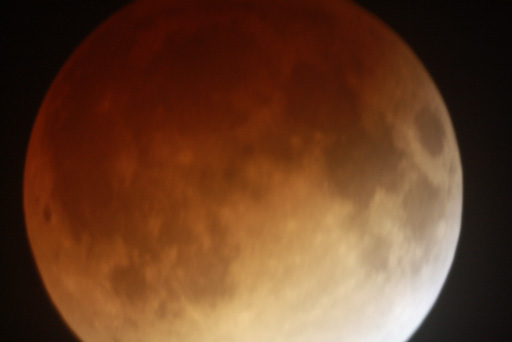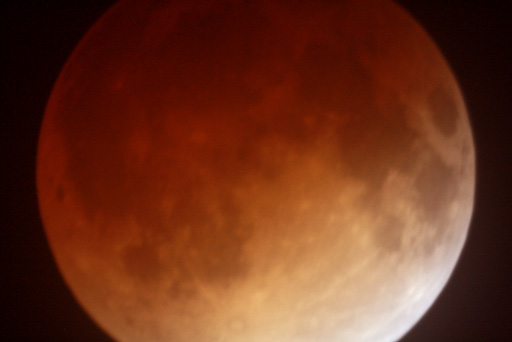Moon Blood

Just before the clouds moved in, I captured a few shots of the lunar eclipse with my telescope. The heavy moisture in the air shows in the photos, but turned out pretty good considering the weather. The clouds covered the moon before totality, so these images lead up to total eclipse.

Lunar Eclipse Blood Color
Moon passes through Earth’s shadow hiding from the touch of Sun’s light. The color we see is due to refraction of sunlight passing through Earth’s atmosphere giving Moon an orange-red, or blood color. If Earth lacked an atmosphere, Moon would hide in darkness. The shade of red depends on how close to totality and the level of refraction caused by varying particles in Earth’s atmosphere.
Equipment
My camera, a digital Canon Rebel, was attached to my telescope, without an eyepiece so that the telescope acts as a big telephoto lens of 2024mm focal length. The telescope, Schmidt-Cassegrain style with 8-inch primary mirror, even looks like a big telephoto lens. A motor helped keep telescope aimed on the moon during the relatively long exposures with the camera set on bulb setting. I counted the exposure length in my head. A button on a wire allowed me to open and close the shutters without shaking the equipment.
Exposure length for these two images were just over 2 seconds for the first and nearly 4 seconds for the second when the eclipse was nearing totality. In comparison, normal exposure time for the full moon without Earth’s shadow would be a fraction of a second.
